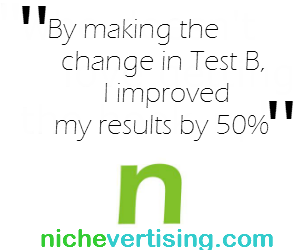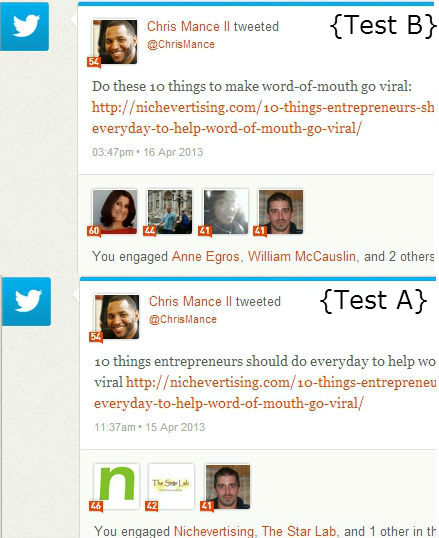 Since Klout was introduced to the world back in the ancient times of social media in 2008, it has been surrounded with controversy. Klout is not controversial in a scammy, sleezy way. It is controversial because it exposes something about you that you would probably prefer to keep private: your popularity.
Since Klout was introduced to the world back in the ancient times of social media in 2008, it has been surrounded with controversy. Klout is not controversial in a scammy, sleezy way. It is controversial because it exposes something about you that you would probably prefer to keep private: your popularity.
For those new to Klout and who don’t know much about how it exposes how popular or unpopular you are , let me give you a brief tutorial on what Klout is.
Back in the early days of Klout, the ranking system measured your social interactions on Facebook and Twitter then assigned you a 1 to 100 score. With 100 being the most popular person in the world, and 1 being the least popular (only in the world that exist on the social web of course). Klout measured basic social interactions such as how many retweets you could get on Twitter, how many likes you could get on Facebook, and your number of followers and friends. It measured a total of only 30 variables back in the day.
Predictably, just like any ranking system on the internet, people started to game Klout’s system and Klout scores were quickly wrote off as meaningless by the tech press.
Fast forwarding to today, you will see that the 1 to 100 ranking is still the same. However, Klout has gone from measuring 30 variables on just Facebook and Twitter to now measuring more than 400 variables across more than 10 possible online profiles you may have including Foursquare, Instagram, WordPress, Linkedin and YouTube among others. Klout now even uses data from Wikipedia to calculate your popularity ranking.
In addition, Klout has gained back some of its significance from the press as it now process up to 12 billion data points each day through a complex algorithm to prevent people from gaming its system. Its significance was also boosted through a partnership (i.e. endorsement) with Microsoft through its recent integration with the search engine Bing.
So now that we are on the same page about what is Klout, let me explain how you can use it to A/B test your tweets on Twitter to help you learn how to fast track the process of going viral.
First of all, A/B testing is one of the 5 critical skills you must learn to go viral. So be prepared to roll your sleeves up and do a little work to get the most out of this. Anything worth having is worth working for, and going viral is something that is definitely worth it. So be forewarned that the steps below are not quick and dirty and will take time to get through.
With that said, let’s take a look at a screenshot of my Klout profile that shows a feature called Influential Moments.
As you can see, both of these tweets are linking to the same post on the Nichevertising Blog: 10 Things Entrepreneurs should do everyday to help word-of-mouth go viral. Klout automatically aggregated these two tweets and listed them on my Klout profile page because they were retweeted by multiple people.
I varied the headline slightly in each tweet. Test A used the original headline from the blog post. Test B used a more “matter of fact” type headline. I also varied the time of day from 11:37am in Test A to 3:47 pm in Test B as well as the day of the week changed from Monday to Tuesday.
By making the change in Test B, I improved my results by 50% if you eliminate the Nichevertising twitter account that retweeted in Test A. I went from two retweets to four retweets. In Test B, I even got my friend to retweet the post again, which is awesome.
I cannot make a definitive conclusion on the factors that caused the 50% increase in retweets because I tested three variables instead of one. So now I am unsure if it was the time of day, day of week, or the change in headline that gave me the boost. This is an important lesson learned of something not to do. But since this was the first time I tried an A/B test like this, I still see this test as successful just based on getting the experience.
What makes doing a test like this time consuming is managing all of these variables to make sure your test is clean. In addition, Klout does not automatically group headlines like this together. So there were about 15 different influential moments between these two tweets that I had to sift through in order to match them together.
But let my mistakes serve as your lessons learned. When you do this, make sure you only test one variable: either time of day, day of week, or headline. Second, make sure on the weeks you do your test, you plan out all of your tweets so you can save time collecting the test results.
The benefit of using Klout for A/B testing vs your normal twitter stream is that Klout only surfaces the tweets from you that generate interactions with someone. This will save you significant time sifting through your data. Another benefit is that you can test headlines across social networks and see the results all in one place. For example, I could have ran this same test on Facebook and Linkedin and viewed the data aggregated together with Twitter all on Klout.
Even with Klout’s aggregation of your influential moments, there still is a significant upfront time investment to figure out what works for you. However, it will be time well spent once you apply your lessons learned to double the number of retweets, shares, comments, or likes you get. What’s more, you can take what you learn and apply it to your email subject lines, future blog post titles, and possibly even your business cards if you get creative.
What do you think about using Klout for doing A/B testing of Twitter like this? Do you know of an easier way to A/B test Twitter other than Klout? If so, please leave a reply in the comments section below.


There is 1 comment. Add yours.